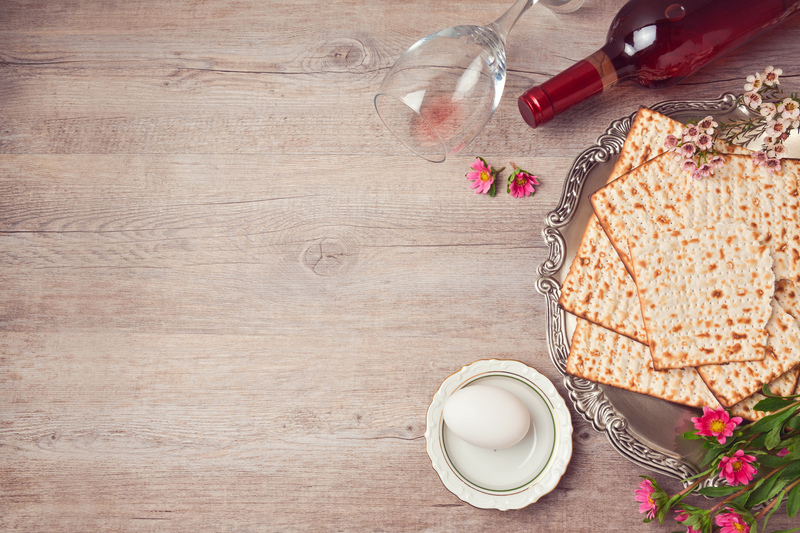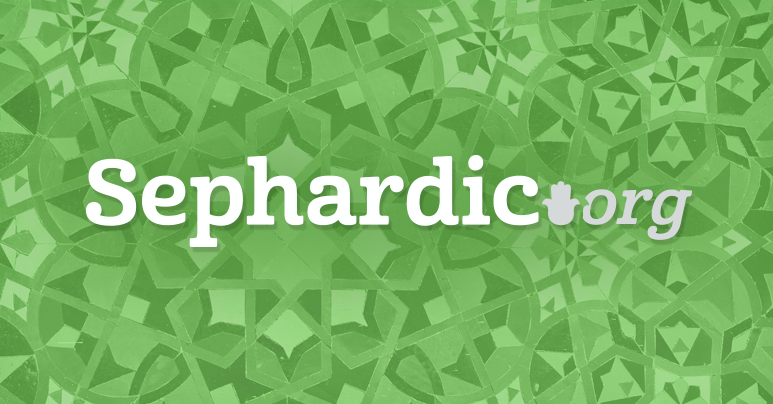
The Redemption of Hitah (Wheat) and Speach (22 Letters)
The liturgical tradition of the Sepharadim places the Mizmor of Thanksgiving (Tehillim 107) at the forefront of the tefilot on the holiday of Pesah. This which provides us a window into the festival is amplified by the Talmud (Berakhot 54) that cites this Perek as the source requiring Israel to give thanks on four specific occasions. They are - one who passes thru the sea, one who passes thru the desert, one released from prison and finally one who recovered from illness.
The Maharsha notes that the relationship of the Mizmor to Pesah is that Israel were indeed saved from all four during the exodus from Egypt and hence are essentially obligated to offer a Thanksgiving sacrifice. In our parasha (7) the Torah details the four types of grain offerings that were to accompany the Todah offering. These consisted of three kinds of masah and one kind of hames breads. A portion of which were given to the Kohen with the balance to be consumed by the end of that night by the offerer and his family.
Following this path one can assert that the Seder ceremony on the first night of Pesah represents somewhat of a Prototypical Todah offering to God. If so, we can now appreciate R. Y. Abrabanel's interpretation (Hagadah) of the child's question posed to his father at the Seder. On all other nights while eating the accompanying breads of the Todah - it consists of both חמץ and מצה - why on this night do we only have before us the three breads of מצה ? Where is the חמץ portion that is required to accompany the Todah eating ceremony?
Connecting the Todah Offering with Passover
There are a number of similarities between the Korban Pesah and Todah. The most glaring is the obligation that both must be eaten by that night together with מצה - The ruling for the former is found in Bo (12:8) - Eat the sacrificial meat during the night..eat it with Masot. The latter can be found in our parasha Sav (7:11-15) - ...A Todah offering which is to be presented along with Masot breads... The Pesah lamb was unique in that it was offered by groups rather than individuals.
The Talmud (Pes 64) relates that there was not a single korban Pesah that did not have a minimum of 10 people registered for it. Likewise every korban Todah culminated in a communal meal. (Parenthetically when today we can no longer bring a Todah we instead are required to reciteברכת הגומל - publicly in front of ten.) The offerer was required to consume parts of the offering along with 27 (of 30) loaves of מצהand 9 (of 10) loaves of חמץ - He would thereby invite his family and the Levi of his community to the communal meal in Jerusalem.
This conforms with the requirement of R. M. Alshikh that Man must publicly acknowledge God's intervention in his personal fate. The Mizmor of Thanksgiving which doubles as the Mizmor of Pesah opens up - "Give thanks to Hashem...those redeemed by Hashem." This is an integral part of the Seder which represents a pure expression of gratitude to God. Our obligation during both is to verbally thank God accompanied by the Masah.
Redemption of Speach - Passover and Todah
As a result of the sin of Es-HaDaat - דיבור which is revealed via the the 22 letters of the אלף בית were concealed. This is the secret in that Moshe was כבד פה - It is only in the midst of the גאולה - do we learn אז ישיר משה - Similarly one who is saved from danger is also the beneficiary of the redemption of דיבור from its husk. It appears to me that the Mizmor (107) clearly reveals that the Thanks offered for being saved is a Tikun from the exile of the Es-HaDaat. "Let them give thanks to Hashem for his kindness and his wonders to the children of Adam (HaRishon). Let them slaughter Todah offerings and relate his works with joyful song."
Redemption of Wheat
The Talmud (Ber 40; San 70) relates in the name of R. Yehuda that the עץ הדעת was of wheat. The consumption of which caused evil to become integrated within all wheat. In order to consume the staple, Adam would have to work to remove negativity. The Zohar (3:188) considers two husks associated with חטה - wheat. One being מוץ or chaff as a verse in the opening chapter of תהליםreads "Not so the wicked (evil husks) - they are like a chaff that (only) the רוח spirit drives away.
The other תבן - Both have no connection with holiness and are therefore free from מעשר - The first two letters חט of חטה represent these husks - The Zohar makes the point that these letters are therefore not found in the names of the twelve tribes.
The ה represents the holiness within -(5 hasadim). As a result of sin - Adam and his descendants will only be able to access holiness via a spiritual sweat of their brow. We should thereby be able to assert that חטה that is made into bread - represents to some extent the redemption of holiness called טוב from the רע which attached itself to עץ הדעת of wheat.
Relationship between the Hitah and Speach
R. HaAri (TM -Emor) notes that this relationship is evident through the numerical value of חטה equaling the 22 letters. We already mentioned the relationship between חטה and דעת - We can now begin to appreciate the Talmudic teaching of R. Yehuda that a child's development of speech coincides with the consumption of דגן -(purified חטה) - For a young child does not know (דעת) how to call his father and mother until he tastes grain.
Mystically this means that when one consumes purified חטה - it is a sign that he has ascended to a purified state of דעת - namely one associated with טוב and not רע - This is the spiritually exalted state of דעת - as it stands between the upper channels of חכמה (father) and בינה (mother). He is homiletically saying that when Daat frees itself from evil then speech is freed from exile as well.
Passover - Only the Initial stage of Redemption
The "child's" question is now taking shape. We must see this seder as if we are leaving Egypt. The tree of עץ הדעת is now exclusively טוב - the 22 letters associated with speech and חטה have been freed! If the Seder represents a form of Todah - then not only מצות but even חמץ should accompany the thanks. Why is this night different from others - with the Fourth חמץ bread being absent and not being on the table with the three מצות - Furthermore if we say as our Sages that the three מצות represent humility - then with each of her first three sons לאה expressed so with each birth - My poverty, I am hated, my husband will now be joined with me.
It is only after her fourth son יהודה that she brings the equivalent of a Todah and says הפעם אודה את ה׳ - Thanks! (See R.S. Sabato for a diff interpretation) - The answer is that Pesah represents only the initial stage of redemption. We know that Israel was on the 49th level of impurity - We were redeemed out of the kindness of the Creator and were placed on parole during the days of the Omer. Evidently redemption is still incomplete - it is dependent upon additional sifting of evil that is attached to חטה - While מצה represents the concept of חפזון when we are forced to limit any progression of evil - God is needed to intervene and make sure that the "Dog" doesn't bark.
The חטה transformed into חמץ without any fear of negativity is reserved for Shavuot - when Israel thru it's merits will stifle evil and earn complete redemption. This is when the loaves of חמץ are offered in the Temple. Theבאתי לארמוני explains the different spiritual planes of Israel during Pesah and Shavuot using the following analogy. There are three levels of processed grain - the צדיקים are associated with סולת or fine flour - the בנונים with קמח or regular flour - the רשעים with סוביןor coarse bran. Hence the child himself admits to the still admittedly low spiritual plane of Israel on the night of the Seder and saysהלילה הזה כלנו מסובין - On this night we are all still חטה that is unrefined and we have not as of yet cleansed ourselves of evil.
Our freedom this night exists solely out of the kindness of Hashem and hence we can only have מצה - We will have to pass thru and ascend during the Omer towards שבועות when the Torah tells us in אמור verses 23:17 שני עשרונים סלת תהיינה חמץ תאפינה - two tenths of סלת (righteous) then it can be baked as חמץ - On Shavuot we can experience the complete redemption from evil and offer the loaves of חמץ - This idea was told to Moshe at the beginning of the redemption 3:12 וזה לך האות כי אנכי שלחתיך ...על ההר הזה - Only at סיני will the אות or twenty letters of חטה be redeemed. Hence the child will have to wait until שבועות to see the redemption elevated to see the חמץ loaves join up with the three מצות present at the Seder.








